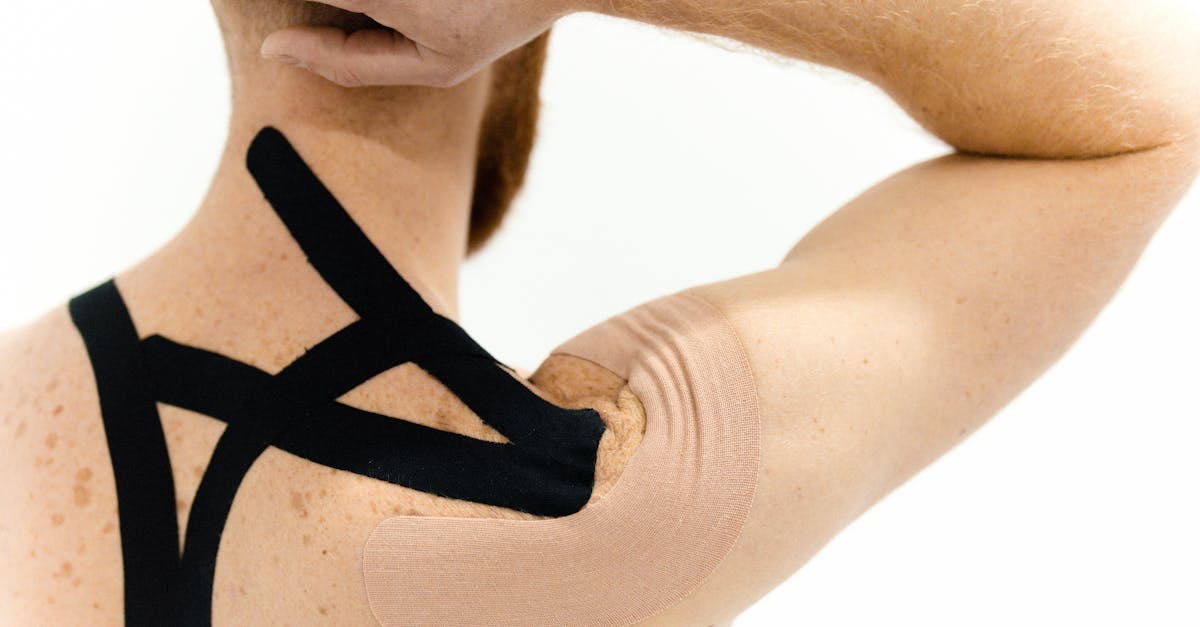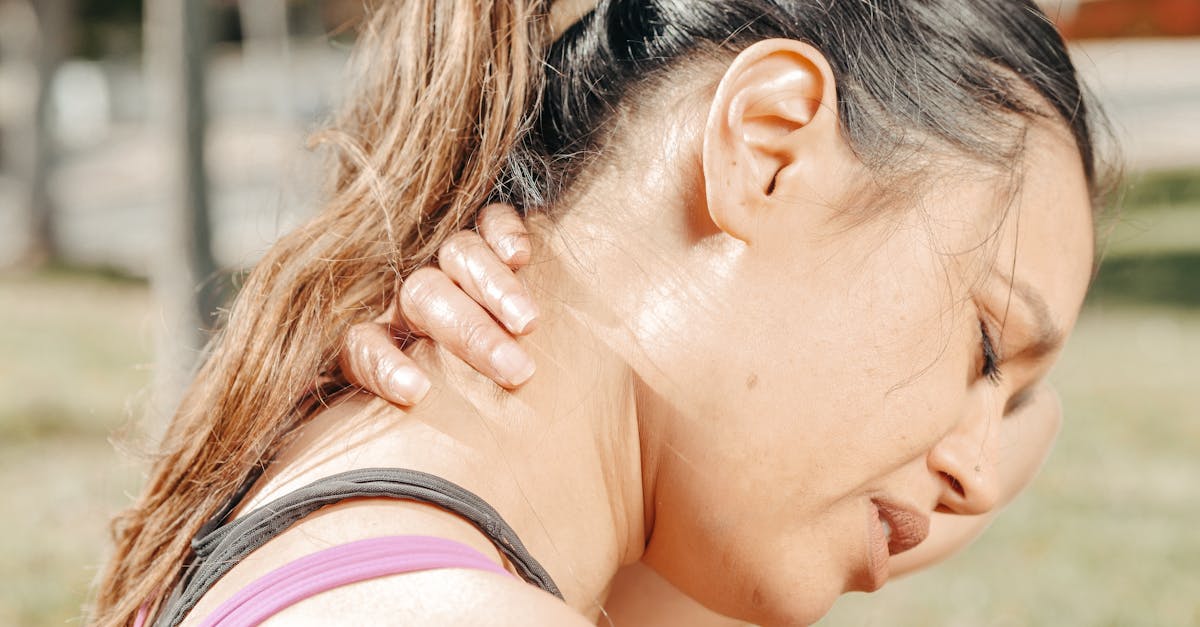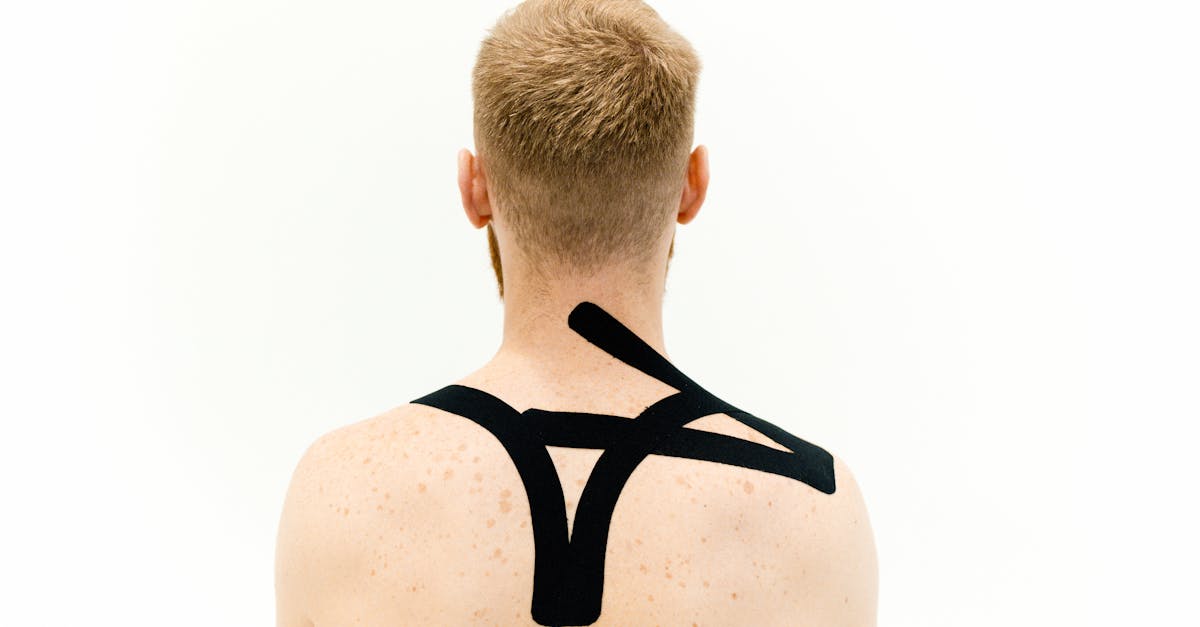Struggling with shoulder pain at night? You’re not alone!
In Short: Shoulder pain disrupting your sleep? Discover effective ways to learn how to sleep with shoulder pain and enhance your nightly rest. This practical guide covers innovative strategies for achieving shoulder pain relief, focusing on proper alignment and support. By adopting gentle shoulder pain exercises and using supportive bedding, you can improve your comfort and overall well-being. Reclaim your health and wellness at Pulse Align Clinics. Book your appointment today!
Are you struggling with lower back pain and poor posture?
If you’re facing shoulder pain at night, worry not! This practical guide to sleeping comfortably with shoulder pain offers actionable tips for better alignment. With techniques designed to address common issues such as frozen shoulder, shoulder impingement, and rotator cuff injury, you can cultivate an effective routine for shoulder pain relief. Discover how posture correction, incorporating shoulder pain exercises, and understanding shoulder pain causes will enhance your well-being. By focusing on gentle stretches and core strengthening, you can find the right methods to help alleviate discomfort caused by conditions like bursitis and tendinitis.

How to Sleep with Shoulder Discomfort: A Practical Guide to Better Alignment
Dealing with shoulder discomfort at night can be a frustrating experience that affects your overall well-being. Discovering solutions to achieve improved posture and neuromuscular recalibration can pave the way for more restful nights. At Pulse Align, we believe that achieving a balanced body naturally can lead to enhanced well-being for all clients.
Understanding Your Body’s Natural Balance
Many individuals encounter moments of discomfort stemming from various stressors in life, whether from sports, daily activities, or poor posture. Our approach focuses on the inherent ability of the body to restore balance. Through gentle stimulation techniques, clients can enjoy a recalibration of muscle tone, which encourages the body to naturally find its equilibrium. This rebalancing promotes an overall sense of wellness and makes navigating daily activities more manageable.
Holistic Benefits of Pulse Align
At Pulse Align, we prioritize natural healing and empower clients on their wellness journey. Clients often share how embracing our approach has resulted in noticeable improvements in their well-being. For instance, one client expressed, “Since incorporating Pulse Align into my routine, my posture has improved naturally, and I’ve experienced much less discomfort during the night.” Our focus is on fostering muscle tone symmetry, contributing to an improved posture and enhancing daily function without targeting specific symptoms directly.
Join the Pulse Align Community
If you’re ready to explore how Pulse Align can complement your family’s wellness routine, we invite you to learn more and schedule a consultation. With locations in Montreal, La Prairie, Terrebonne, Chicoutimi, Charlesbourg, Saint-Jérôme, Châteauguay, Sainte-Marie, Les Escoumins, Granby, and Panama City, you can find a clinic conveniently located near you. We are dedicated to providing a supportive environment that is safe and welcoming for families, including those with children and pregnant women. Remember, Pulse Align complements your healthcare team effectively. Book your consultation today and discover how we can help promote your well-being!
- Optimal Pillow Placement: Ensure pillows support neutral neck alignment.
- Side Sleeping Support: Use a body pillow to relieve shoulder strain.
- Back Sleep Strategy: Place a pillow under your knees to support your spine.
- Gentle Stretching: Include light shoulder stretches before bedtime.
- Cool Environment: Keep your room temperature comfortable for restful sleep.
- Mindfulness Practices: Engage in relaxation techniques to ease tension.
- Regular Sleep Schedule: Maintain consistent sleep timing for better quality.
- Hydration: Stay hydrated throughout the day to avoid night discomfort.
- Movement Breaks: Take breaks for gentle stretches during the day.

If you’re struggling with shoulder pain that disrupts your sleep, fear not! This practical guide is here to provide you with effective strategies to enhance your sleep comfort through posture improvement and neuromuscular health. Individuals enduring conditions like frozen shoulder, rotator cuff injury, or bursitis, among others, can benefit from understanding how proper alignment during sleep can lead to rejuvenating rest. Let’s explore actionable tips that empower you to embrace a pain-free night.
Understanding Shoulder Pain Causes
Before we dive into solutions, it’s essential to recognize common shoulder pain causes such as shoulder impingement, tendinitis, or discomfort arising from a bursitis. Proper understanding can guide your approach to recover and mitigate issues like shoulder pain when lifting arm.
Optimal Sleep Position for Shoulder Pain
The way you sleep can make a considerable difference in mitigating shoulder pain at night. It’s generally advisable to sleep on the side opposite your affected shoulder. Consider utilizing a body pillow for added support, helping to maintain shoulder alignment and reducing strain on the brachial plexus injury.
Supportive Bedding Essentials
Investing in the right bedding can significantly enhance comfort. Opt for a medium-firm pillow that promotes neutral neck alignment. Providing proper support during sleep minimizes strain on the shoulders, particularly important if you’re coping with shoulder pain from playing sports.
Incorporate Shoulder Pain Relief Exercises
Integrating shoulder pain exercises into your daily routine is key to improving overall comfort. Gentle stretching, coupled with core strengthening exercises, can bolster your resilience against discomfort. Consider activities like shoulder rotations or trunk exercises that enhance stability and flexibility, making your body more adaptable to sleep positions.
Mindfulness Practices Before Bed
Relaxation techniques, including deep breathing or gentle stretching routines before bed, can alleviate tension and prepare your body for restful sleep. Mindfulness practices foster nervous system recalibration, helping to ease the discomfort associated with chronic shoulder issues.
Seek Professional Guidance
If shoulder pain persists or intensifies, working with a professional can offer customized solutions. Institutions like Pulse Align are equipped with knowledgeable practitioners who can assist in developing targeted strategies for how to relieve frozen shoulder pain effectively. Their holistic approach addresses underlying issues, helping you reclaim comfort.
Call to Action
Ready to transform your sleep and overall well-being? Schedule a consultation with Pulse Align today. Our team specializes in providing personalized exercise plans and treatments tailored to your specific needs. Elevate your journey towards a pain-free life and embrace restful nights by reclaiming your health!
| Technique | Description |
|---|---|
| Optimal Pillow Placement | Ensures head and neck alignment for enhanced comfort. |
| Side Sleeping Support | Utilize supportive pillows to reduce shoulder strain. |
| Body Pillow | Use a body pillow to support your arms and maintain softness. |
| Gentle Stretching | Incorporate light stretches to relax muscles before sleep. |
| Temperature Control | Maintain a cool environment to promote restful sleep quality. |
| Mindfulness Practices | Engage in relaxation techniques to ease tension before bed. |
| Regular Sleep Schedule | Establish a consistent bedtime routine to enhance overall rest. |
| Hydration | Stay well-hydrated throughout the day for better comfort at night. |
| Gentle Movement Breaks | Incorporate light stretching during the day to support alignment. |
| Supportive Bedding | Invest in quality bedding that accommodates your body’s needs. |

Testimonials: Transforming Wellness Through Comfort and Alignment
“Since starting my journey with Pulse Align, I’ve noticed a remarkable shift in how I manage my shoulder pain at night. The unique approach emphasizes natural recalibration and has truly helped restore balance to my body. I used to dread bedtime, but now, with better posture and support, I’m sleeping comfortably and waking up feeling refreshed. I can’t recommend Pulse Align enough!” – Alex L., Mont-Royal
“Living in Terrebonne, I struggled with nighttime discomfort that impacted my daily life. Thanks to the gentle techniques at Pulse Align, I’ve discovered innovative solutions for sleeping comfortably with shoulder pain. The supportive staff has guided me in aligning my posture, and I’ve felt significant improvements naturally. I’m finally able to embrace a restful night’s sleep!” – Jenna R., Terrebonne
“Pulse Align’s holistic recovery approach helped me regain my wellness in ways I never thought possible. As someone living in Châteauguay, I found their strategies invaluable for alleviating shoulder discomfort. Each session felt like a step closer to restoring my body’s natural abilities. My sleep has improved, and I feel empowered to take control of my health.” – Liam T., Châteauguay
“I feel a renewed sense of balance since I started at Pulse Align in Sainte-Marie. Their team focuses on maximizing the body’s potential for healing. My shoulder pain used to disrupt my life, but now, I enjoy restful nights thanks to their guidance on posture and alignment. I’m grateful for this opportunity to reclaim my health!” – Sarah K., Sainte-Marie
“In Chicoutimi, Pulse Align has provided me with essential techniques for aligning my body properly as I sleep. Their emphasis on gentle recalibration has allowed me to experience improvements naturally, reducing my shoulder pain significantly. I recommend their approach to anyone looking to enhance their overall well-being.” – Oliver M., Chicoutimi
For anyone in areas like La Prairie, Deux-Montagnes, and beyond, the services at Pulse Align are designed to work in collaboration with your healthcare teams to facilitate your wellness journey. If you’re ready to explore the benefits of holistic recovery, check out Our Clinics and discover how we can support your family’s path to enhanced health and comfort.
Struggling with shoulder pain that disrupts your sleep? You aren’t alone. Many individuals experience discomfort caused by conditions such as frozen shoulder, rotator cuff injury, or bursitis. This article outlines effective strategies on how to sleep with shoulder pain, emphasizing posture improvement and holistic techniques to promote neuromuscular health.
Understanding the causes of shoulder pain is crucial. Conditions such as shoulder impingement and tendinitis can contribute to discomfort, especially when lifting an arm. Recognizing these underlying issues allows for tailored solutions that focus on pain relief.
Finding the right sleeping position can significantly impact your experience with shoulder pain at night. Favor sleeping on the side opposite your affected shoulder, and use supportive pillows to reduce strain. If you prefer sleeping on your back, position a soft pillow under your knees to maintain spinal stability.
Investing in quality bedding, such as medium to firm pillows, is essential for maintaining a neutral spine. This ensures better alignment, minimizing strain during sleep, particularly for those dealing with shoulder pain when lifting their arm.
Incorporating gentle stretching and shoulder pain exercises into your bedtime routine can facilitate relaxation and improve flexibility. Simple rotation exercises can relieve tension, while core-strengthening routines promote better support for the upper body during sleep.
Additionally, creating a restful sleep environment plays a significant role in achieving quality sleep. Keeping your bedroom cool, dark, and quiet helps, as do mindfulness practices before bed, like deep breathing or meditation, which further relieve tension.
If shoulder pain persists, consider reaching out for personalized guidance. A professional can provide tailored exercise plans and advocate for holistic recalibration of your body. With options such as gentle shockwave therapy available, quicker recovery and better long-term results can be achieved.
Our Mission
At Pulse Align, our mission is to deliver evidence-based, client-centered treatments that address the underlying causes of pain and dysfunction. By integrating advanced techniques and technologies, we strive to empower each person to take control of their health, ensuring a high standard of care, lasting relief, and an improved quality of life.
Learn more about our approach and available services at www.pulsealign.com and find a location near you here: https://pulsealign.com/our-locations/.
Discover the Benefits of TAGMED’s Spinal Decompression Therapy for Chronic Pain Relief
TAGMED offers an advanced Spinal Decompression Therapy, a non-surgical solution designed specifically to address moderate-to-severe disc issues, including herniated discs, bulging discs, and foraminal stenosis. By gently reducing pressure on the affected discs and nerves, this specialized technique helps enhance mobility, alleviate pain, and support your body’s natural healing process. If you’ve reached a plateau with other therapies, discover how TAGMED’s evidence-based decompression approach can help you resume an active, comfortable life.
Have you tried conventional treatments and still struggle with persistent back pain due to a severe disc condition?
The mechanism of TAGMED’s neurovertebral decompression involves applying a controlled, progressive traction force to the spine. This method increases the space between vertebrae, effectively reducing pressure on intervertebral discs and nerve roots. By promoting better fluid circulation in the targeted area, this process helps lower inflammation and relieve pain, thereby offering a reliable, non-invasive solution for individuals with chronic back pain issues.
One of the specific benefits of this non-invasive approach is its effectiveness in alleviating chronic pain and symptoms linked to conditions like disc herniation or spinal stenosis. By reducing pressure on nerve structures and optimizing fluid circulation around the discs, TAGMED’s spinal decompression therapy can speed up recovery and enhance quality of life for a wide variety of patients seeking relief from persistent discomfort, such as sciatica, facet syndrome, and degenerative disc disease.
When comparing TAGMED’s neurovertebral decompression technology with other commonly used treatments, distinct advantages become evident. Unlike invasive interventions such as surgery or corticosteroid injections, TAGMED’s approach minimizes medication-related risks and offers a potentially faster path to recovery. This therapy stands out as a compelling choice for those seeking safer, evidence-based alternatives without the side effects associated with traditional treatments like long-term pain medications or physiotherapy that often only focus on symptom management.
Numerous patients have benefited from TAGMED’s neurovertebral decompression for chronic pain and related symptoms. Testimonials illustrate the transformative effects of this therapy, such as lasting pain relief, quicker resumption of daily activities, and a reduced dependence on pharmaceuticals. A patient noted, “After a series of neurovertebral decompression sessions, I can finally enjoy my life again without the nagging discomfort of a herniated disc. I wish I had found this sooner!”
These firsthand accounts showcase not only the physical improvements but also the emotional relief experienced by patients, reinforcing the practical advantages of this innovative therapeutic approach.
Embrace the opportunity to alleviate your chronic pain through TAGMED’s Spinal Decompression Therapy, and take the first step toward a better quality of life.
Embrace a Pain-Free Night’s Sleep with Pulse Align
If you’re struggling to find comfort while sleeping due to shoulder pain, the journey towards holistic health and natural pain relief begins with understanding effective strategies for better alignment. Pulse Align offers a comprehensive guide that emphasizes posture correction and neuromuscular recalibration, helping clients achieve improved posture, reduced discomfort, and increased mobility. By focusing on the body’s natural ability to heal, you can reclaim your restful nights and enhance your overall well-being.
Client experiences reveal the positive impact of the Pulse Align approach. Many have shared how their journeys led to significant improvements, including overall comfort and delightful relaxation during sleep. Through our gentle, non-invasive methods, you’ve got the opportunity to engage with your body in a way that promotes balance and supports wellness naturally.
Ready to take action? Schedule your consultation now and discover the Pulse Align difference today. By prioritizing your health and well-being, you can foster a more comfortable lifestyle while effectively managing discomfort. Visit our website to learn more about how our tailored approach can assist you on your wellness journey. Embrace this opportunity to enhance your life and enjoy every moment, free from the constraints of pain.

“`html
Do you suffer from a chronic condition that responds little or not at all to conservative treatments?
Are you seeking non-traditional solutions for discomfort that disrupts your day-to-day life? At Pulse Align, we offer an innovative, non-invasive method designed to support your body’s natural recalibration through gentle, imperceptible pulses. This gentle approach aims to restore balance and optimize posture, potentially leading to a reduction in muscle and joint tension, ensuring you can sleep comfortably and embrace daily activities.
It’s important to note that Pulse Align focuses on helping the body recalibrate itself naturally rather than targeting individual discomforts directly. This holistic approach can lead to remarkable improvements in comfort and posture. By encouraging your body to function more harmoniously, many clients share positive experiences of a renewed sense of well-being and symmetry throughout their everyday lives.
Personalization is at the heart of Pulse Align’s philosophy. Clients frequently report remarkable shifts in their overall wellness, including relief from tension that often accompanies the modern lifestyle. Stories of those who have embraced our services underscore the transformative impact of synchronizing muscle tone. As one client mentioned, “I have noticed a significant improvement in my comfort, and my posture has never felt better!” These experiences highlight how a focus on balance and alignment can create a ripple effect of positivity throughout your body.
We invite you to explore our Pulse Align website to learn more about our services and discover locations in cities like La Prairie, Mont-Royal, Terrebonne, Chicoutimi, Charlesbourg, and Saint-Jérôme. Here, you can seamlessly book a consultation for yourself or your family. Remember, Pulse Align complements your existing wellness journey with a commitment to a family-friendly, safe, and inclusive approach that respects your individual healthcare needs.
To learn more about our services and book an appointment, visit our website: Pulse Align. Taking this step could lead you toward a more balanced, comfortable life for you and your loved ones.
Frequently Asked Questions
Shoulder Pain
Is ice always recommended?
Ice is useful in acute phases to reduce inflammation, but shouldn’t be applied too long or directly on the skin.
Can I do weight training with shoulder pain?
It’s better to avoid aggravating exercises and consult a professional to adjust your routine.
What are common causes of shoulder pain?
Causes include rotator cuff tendinitis, bursitis, ligament injuries, osteoarthritis, dislocations, and repetitive motions.
Is surgery ever necessary?
In severe cases (tendon tears, advanced osteoarthritis, chronic instability), surgery may be considered.
Can massages relieve shoulder pain?
Yes, a gentle massage can release muscle tension, improve circulation, and reduce pain, but avoid abrupt movements.
Does sleep position affect shoulder pain?
Yes, sleeping on the painful shoulder can worsen pain. Using a supportive pillow or changing position may help.
Can repetitive motions at work cause shoulder pain?
Absolutely. Repetitive overhead movements increase the risk of tendinitis and bursitis.
Are women more sensitive to shoulder pain?
Studies don’t show significant differences by sex, but activities, professions, and sports can influence risk.
Is mild morning shoulder stiffness normal?
A slight stiffness can be normal, but if it lasts long or is painful, seek medical advice.
Does carrying heavy loads cause shoulder pain?
Yes, lifting heavy objects without proper technique can overload the shoulder and cause pain.
Adam Blanc understands that shoulder pain can do more than slow you down—it can impact your entire quality of life. As a Shoulder Pain Awareness Advocate at Pulse Align, he’s dedicated to showing readers that genuine relief is not just possible, but within reach. Drawing on the latest research, Adam combines expert insights with compassionate guidance, inspiring people to move toward greater comfort and mobility. His approach is about more than just managing symptoms; it’s about empowering individuals to rediscover their strength and embrace every moment, free from the constraints of pain.
Medical Disclaimer
The information and advice provided on this site do not replace the advice, diagnosis, or treatment of a healthcare professional. Please note that the author of this article is neither a doctor nor a specialist in a medical specialty as defined by the Collège des médecins du Québec. Manual medicine, functional medicine, and sports medicine as described on this site exclude any medical treatment or diagnosis made by a doctor or medical specialist. Always consult your doctor for any medical questions. For more details, please read our complete Legal Notice.




